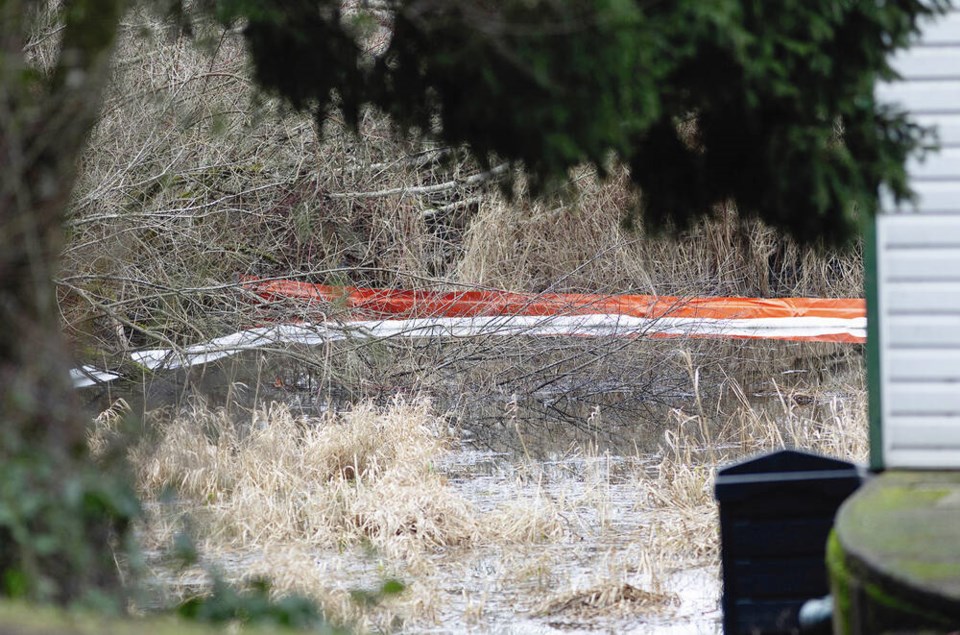Homeowners with underground oil tanks are under no obligation to remove them in most of Greater Victoria, but leaving them in the ground is risky.
Heating oil has spilled into Swan Lake and the Gorge Waterway from residential tanks in two incidents in the last few weeks. In the Swan Lake spill this week, the Ministry of Environment estimated that 600 litres of heating oil spilled into a marshy area of the nature sanctuary.
The spill was initially reported by Saanich as being the result of a faulty valve at the bottom of the oil tank, but Saanich police now confirm that they have begun an investigation after the tenants of the house allege that they found the valve had been tampered with and left open deliberately.
Underground oil tanks were buried on residential properties prior to 1961, when the practice was discontinued. While they are all inactive by now, as their average life span was only 15 to 25 years, there are still thousands of underground oil tanks in the region.
In Oak Bay, the fire department’s records show the municipality had approximately 1,800 underground oil storage tanks in residential properties as of 1998, the last time a review was undertaken. As of 2012, 1,434 of the tanks have been rendered inert or removed.
“There is no requirement for homeowners to remove an underground tank unless there is obvious signs of contamination,” said Deputy Chief Roger Stewart of the Oak Bay Fire Department. “But homeowners need to be aware of the risk that they are willing to bear.”
He said tanks could leak and leach oil into the soil for years prior to the discovery of the contamination. With the incidence of more king tides in recent history, parts of the municipality have seen the water table rising as the soil becomes super-saturated.
Because oil floats on water, every time it rains, oil makes its way to the surface through corroded tanks. Even a small leak can have a far-reaching impact, with pollutants making their way to neighbouring properties, storm drains and eventually into waterways, harming marine ecosystems.
Years ago, when tanks in Oak Bay were decommissioned and made inert, homeowners were allowed to leave the carcass in the ground, which is no longer the case.
“Yes, the risk is lower [of soil contamination] but there is still a risk,” said Stewart.
He said that when a tank is removed, the homeowner or contractor has to take out a permit. When the excavation is complete, the department will attend and inspect the “nest” — the soil that surrounded the tank — to check for contamination.
Esquimalt, like Oak Bay, has records of the locations of underground tanks.
But given the amount of time that has elapsed, the records likely contain inaccuracies so it’s not possible to say how many remain, said Tara Zajac, manager of communications with the Township of Esquimalt.
Zajac said the township does not require inactive tanks to be removed by the homeowner, but many insurers do, because of the liability potential of underground tanks.
Esquimalt’s role is to ensure the task is done professionally and completed as required for the permit, she said.
The City of Victoria advises property owners to check the property database at the Victoria Fire Department to learn if they have an underground tank. But while the database will tell you if you have an underground tank, it won’t tell you exactly where it is.
The District of Saanich is the only municipality in the region that requires inactive underground tanks — or those that have been out of service for more than two years — to be removed.
However, tanks that had been rendered inactive with a permit from the Saanich Fire Department before May 26, 2014 are exempt from the requirement.
In addition, all underground tank-removal permits in the municipality require soil testing to be conducted by a certified environmental engineer to determine if contaminants are present.
>>> To comment on this article, write a letter to the editor: [email protected]



